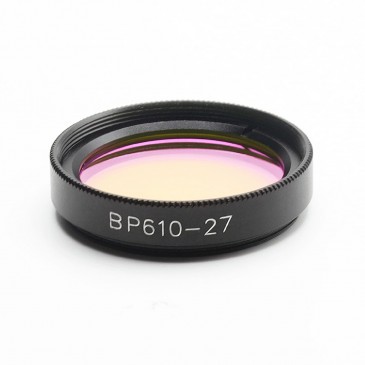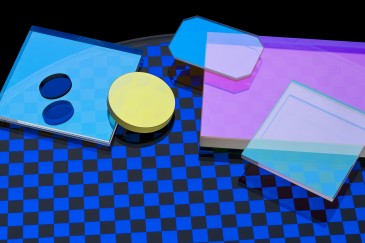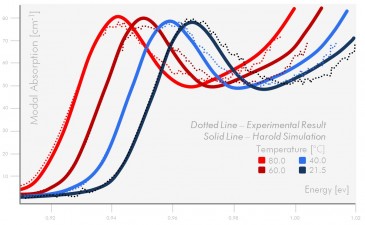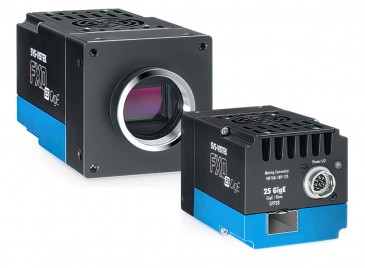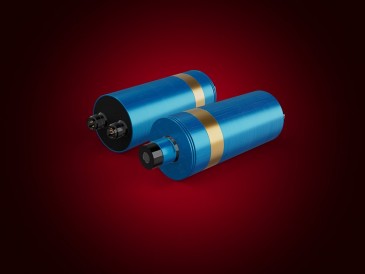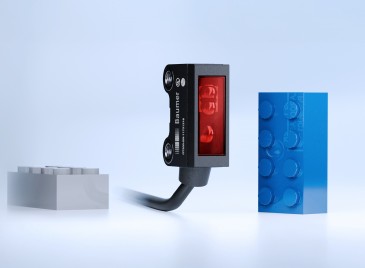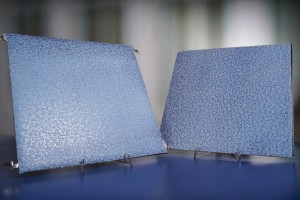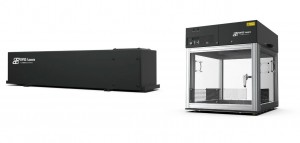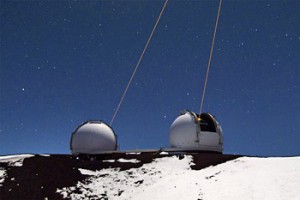
The W. M. Keck Observatory, on the Summit of Mauna Kea in Hawaii, has recently been awarded grants totalling $4 million to build an innovative laser system, which will help power the next generation of astronomical research. The new system, based on Laser Guide Star Adaptive Optics (LGS AO), will further improve a technology that already enables ground-based telescopes to exceed the observational power of telescopes in space.
Guiding light
In theory, the larger a telescope the more detail it can see because it has better angular resolution than a smaller telescope. However, this resolution is lost by the blurring effect of turbulence in the earth’s atmosphere. The solution is either to put an expensive telescope in space, or build a much cheaper ground-based LGS AO system.
The first implementation of an adaptive optics system on a large telescope resulted in a vast improvement in angular resolution.
According to Peter Wizinowich, head of adaptive optics developments at Keck Observatory, the first implementation of an adaptive optics system on a large telescope was made on the Keck II telescope in 1999, which resulted in a vast improvement in angular resolution. This first implementation used the light emitted by a “natural guide star,” near the scientific object of interest, to sense the impact of atmospheric turbulence, which was then effectively removed by using an adaptive optics system based on a deformable mirror that changes shape approximately 1000 times per second.
"This first implementation was limited to small fractions of the night sky where the science object was close enough to a bright enough natural guide star. Still, this produced many spectacular results, including the first image of a planetary system," said Wizinowich.
"The catch is that you need a bright enough guide star to sense the atmospheric turbulence. When you use a natural guide star this limits you to looking at around 1% of the night sky," he added.
Exciting the atoms in the sodium layer causes them to emit light of a well-defined wavelength to produce a “laser guide star”.
Following the success of the natural guide star adaptive optics technique, the world’s first artificial, or LGSAO, technique for a large telescope was commissioned on the Keck II telescope in 2004. This method uses a purpose-built laser to excite sodium atoms that naturally reside in an atmospheric layer 90 kilometres above the Earth’s surface. Exciting the atoms in the sodium layer causes them to emit light of a well-defined wavelength to produce a “laser guide star” that can be used in a similar way to the “natural guide star” to measure the atmospheric turbulence. This advance allowed astronomers to produce sharp images of celestial objects positioned anywhere in the sky.
"When you use a laser guide star you get much closer to 100% sky coverage. I say closer, because you still need a natural guide star - but it can be much fainter - to measure the image motion introduced by the atmosphere," explained Wizinowich.

Laser Guide Star Adaptive Optics (LGS AO) at the Keck Observatory, Hawaii.
Image courtesy of Dan Birchall
Super-massive black hole
As Wizinowich explained, a lot of science has already been done with the existing LGS system that could not have been done in any other way. To date, around 140 peer-reviewed scientific papers have been published based on observations made using this system.
"Some examples that come to mind are observations of the orbits of the stars around the supermassive black hole at the centre of our galaxy, determinations of the masses of the lowest mass stars in our galaxy, morphology and kinematics of high redshift galaxies, identifying the precursor stars of supernovae in other galaxies, and using gravitational lenses to characterize dark matter," said Wizinowich.
"So far the Keck II (LGS AO) system is the only system in the world that has proven itself to be scientifically productive…”
"So far the Keck II system is the only system in the world that has proven itself to be scientifically productive, having produced 70% of the refereed science papers using LGS AO," he added.
The funding boost comes in the form of a $1.5 million grant from the W. M. Keck Foundation, adding to an existing $2 million grant from the Gordon and Betty Moore Foundation, which will be used to upgrade the current LGS AO system and further enhance the observational capacity at the site.
"The new laser will support three scientific instruments as part of the LGS AO facility: a near-infrared camera, near-infrared spectrograph and the Keck Interferometer. It will also be more compact, energy efficient, robust and reliable, and require much less maintenance than the complex and ageing laser system currently operating," said Cyndi Atherton, Program Director - Science at the Gordon and Betty Moore Foundation.
"This one-time grant supports the acquisition of a state-of-the-art 20-watt continuous-wave laser for the Keck II Telescope. The resulting increase in sensitivity and accuracy will aid all science being conducted on the current Keck II Telescope and future large ground-based telescopes, accelerating new waves of scientific discovery throughout the astronomy community," she added.
Written by Andrew Williams, Contributing Editor, UK, Novus Light Technologies






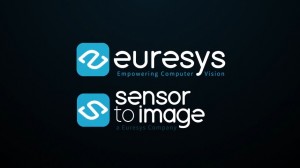
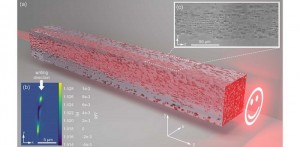
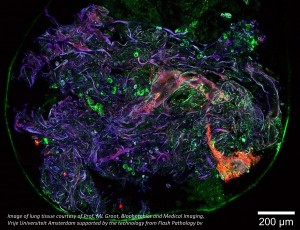

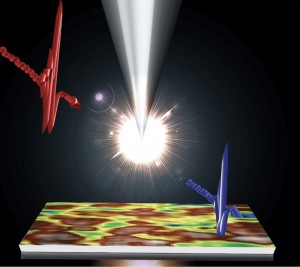

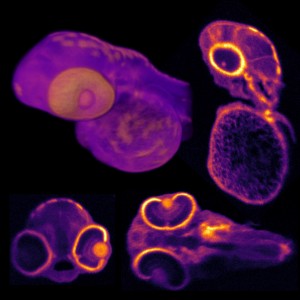
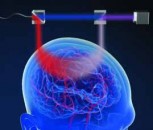

















 Back to Enlightening Applications
Back to Enlightening Applications
